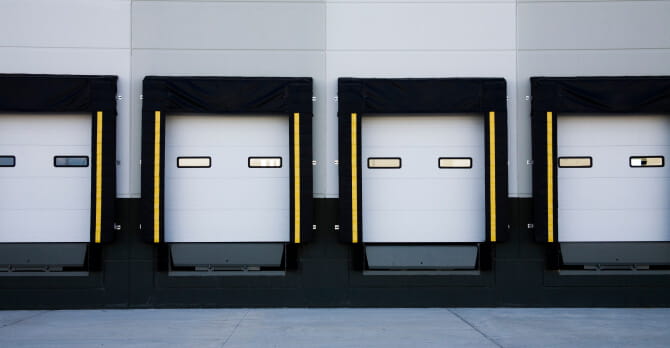Air curtain: Pedestrian single and double doors and shipping/receiving doors in existing and new buildings are eligible. The space adjacent to the door must be heated during the heating season by natural gas fueled equipment. Equipment installed must be tested by a third-party performance standard (ANSI/AMCA 220-05 or similar) and installed as per manufacturer specifications. Replacement of existing air curtains is not eligible. New construction applications where the air curtains have been installed on pedestrian doors in lieu of a vestibule are not eligible. Heated air curtains are not eligible. Shipping/Receiving doors include doors classified as dock-in (truck trailers dock at the doorway and doorway is typically 4 ft. off the ground) or drive-in (door opens and closes to allow traffic to pass through doorway and doorway is typically located at ground level). Air curtains are not eligible on dock doors where other mechanisms that combat infiltration at the shipping/receiving door are present, such as dock door seals. Shipping/Receiving doors with vestibules are not eligible. Other door sizes not listed may be eligible.
Dock door seal: Only replacement of existing deteriorated seals or the addition of new seals to an existing building with shipping/receiving dock doors that do not have any type of seal in place are eligible. New construction is not eligible for this offer. If other mechanisms that combat infiltration at the shipping/receiving door are present, such as air curtains, it is not eligible. For all Industrial customers, replacement of existing deteriorated seal projects are only eligible if the incentive application is approved by an Enbridge Gas Representative. The space adjacent to the door must be heated during the heating season by natural gas fueled equipment. Two types of seals (compression and shelter) are eligible based on door size. Compression seals (this is a foam pad that is wide and fixed to the door, with a minimum of 40 oz. vinyl cover) on 8' x 8', 8' x 9' and 8' x 10' doors. Shelter type seals (this is a curtain-like seal with minimum 40 oz. vinyl with shelter frame that is made of steel with foam pad or foam core that compresses against the sides and top of the trailer box on 9.5' x 10.5' or 10' x 10' doors. Other door sizes not listed may be eligible but must be reviewed and approved prior to application.
Existing deteriorated seals are only eligible if the incentive application is approved by an Enbridge Gas representative and if the existing seal has a minimum average 2-inch gap based on a 6-point measurement, outlined below. To qualify existing dock door seals as “deteriorated” and consider them as eligible for the Enbridge Gas incentive, a measurement form (with six points of measurement) must be completed for each door, and each seal must have a minimum average gap of 2 inches. This measurement must be taken and provided with the application form to be eligible. If a measurement form is not provided with the application, then it is not eligible. The existing deteriorated seal must have a minimum average gap of 2 inches along the seal’s side-profile projection, from where it begins at the wall to where the side-profile projection ends, determined by a 6-point measurement.
Average = [gap1+ gap2+ gap3+ gap4+ gap5+ gap6] / 6
Average = average deteriorated seal gap (inches)
- If average ≥ 2 in. = deteriorated seal, eligible
- If average < 2 in. = not deteriorated seal, not eligible
Please note that you are measuring “absence” of the seal (physical hole or gap) that was in place before but that is now torn.













